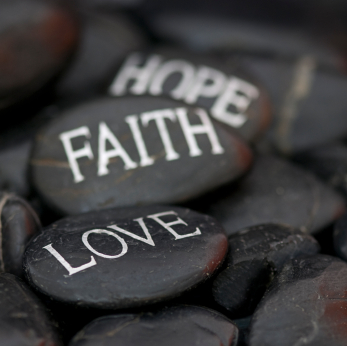The History of Mothers Day
In Canada, Mother’s Day is always celebrated on the second Sunday in May. The holiday is a time to acknowledge and honor anyone who is a mother. People show their gratitude in numerous ways including giving cards and flowers, cooking special meals or by taking moms out to dinner. Many Canadian Mother’s Day traditions originated in the United States. Mother’s Day was made an official holiday in America in 1914 by President Woodrow Wilson.
Ancient Times
The earliest Mother’s Day celebrations are attributed to the Ancient Greeks. They occurred in the spring and honored Rhea who was the Mother of the Gods. One of Saturn’s moons is also named for her.
17th Century
In 17th century England, there was a day reserved to honor the mother of Jesus Christ, Mary. It later evolved to include all mothers and became known as Mothering Sunday to Christians. Mothering Sunday was celebrated on the fourth Sunday of Lent, which is the 40 day period prior to Easter. English servants were often given the day off and so they could return home to visit their mothers. It was customary to bring a gift. Over time, as Christianity became more prevalent throughout Europe, the day also became a time to worship Mother Church. Christians of this era believed the Church gave them life and shielded them from harm. These more religious-centric celebrations faded over the years.
19th Century
Anne Marie Reeves Jarvis is credited with being one of the American inspirations for Mother’s Day as it is known today. She worked to improve sanitation for both the North and South during the Civil War and also promoted “Mothers Friendship Day” in an effort to help reconcile both sides after the Union army was victorious in 1865.
Julie Ward Howe was influenced by the work of Jarvis. Howe is probably best known for writing “The Battle Hymn of the Republic,” also called “Mine Eyes Have Seen the Glory.” Deeply impacted by the death and suffering caused by the Civil War and Franco Prussian War, Howe began a crusade for peace. She advocated for the concept of a “Mother’s Day of Peace,” which would be celebrated in early June. It was largely intended as way to get women united against war. Howe was never able to get Mother’s Day for Peace made into a formal holiday. However, in 1987, a stamp was issued in acknowledgement of her efforts.
20th Century
Anna Jarvis, daughter of Anne Marie Reeves Jarvis, was instrumental in getting Mother’s Day recognized as an official holiday in the early 20th century. She cared for her sick mother before she died and came to the conclusion people did not appreciate their mothers enough when they were alive. What began as a letter writing campaign to congressmen, ministers and businessmen resulted in the founding of the Mother’s Day International Association in 1912. Two years later, Woodrow Wilson signed a Presidential proclamation making the second Sunday in May Mother’s Day. It became customary to give mothers white carnations at churches on the holiday because they were a favorite flower of the elder Jarvis.
Mother’s Day Around the World
Mother’s Day is celebrated a wide variety of ways around the world.
Flowers are a favorite Mother’s Day gift in Australia with carnations at the top of the list. Chrysanthemums have become popular as well, and Australian mothers are called mums.
Mother’s Day is a big holiday in Brazil; only Christmas is more commercialized. The day is often commemorated with children’s performances and large family gatherings.
Napoleon originally declared Mother’s Day (Fete des Meres) a holiday in France, but it wasn’t officially recognized until 1950. Mothers frequently receive gifts and enjoy a celebratory meal.
Mothers do countless things for their children, many of which are not truly appreciated until much later in life. Mother’s Day is a great time to say thank you.
Getting an Annulment in Canada An annulment nullifies a marriage. This legal procedure is most closely linked with the Catholic Church, which believes that marriage is a commitment for life and does not sanction divorce. Traditionally, getting a marriage annulled has been considered tedious, bureaucratic and expensive. However, in Canada, church lawyers have been working to make the process more efficient. Payment for an annulment is typically voluntary, and the proceeding is not delayed if the parties do not provide compensation for the services rendered.
An annulment nullifies a marriage. This legal procedure is most closely linked with the Catholic Church, which believes that marriage is a commitment for life and does not sanction divorce. Traditionally, getting a marriage annulled has been considered tedious, bureaucratic and expensive. However, in Canada, church lawyers have been working to make the process more efficient. Payment for an annulment is typically voluntary, and the proceeding is not delayed if the parties do not provide compensation for the services rendered.
The Annulment Process
Either spouse can initiate annulment proceedings. In the eyes of the Catholic Church, all marriages are valid unless proven otherwise. Following are some conditions under which an annulment will be granted:
If either spouse was already married to someone else when the wedding took place, you are eligible for an annulment.
Marrying someone closely related to you such as a sibling, aunt or uncle is grounds for an annulment.
If either party consented to wed the other based on a misrepresentation or falsehood, an annulment is an option that can be pursued.
Mental illness and incapacity are also reasons for an annulment. Examples include one of the spouses being emotionally disturbed at the time of the wedding or being drunk or high on drugs.
If either spouse was unable to have sexual intercourse after the wedding took place, there are also grounds for an annulment.
One of the spouses being too young to legally wed without parental consent is another reason an annulment can be granted.
Applicants typically submit the testimony of witness in order to validate their claims. One of the main reasons the process is believed to be so time consuming in Canada is the Vatican’s rule about appeals. Every annulment decision in the country is automatically sent to the national tribunal in Ottawa for review, even if there is no request for an appeal. There has been a proposal submitted to eliminate this step in the process.
Three Annulment Myths
Both parties have to agree on getting an annulment or it will not be granted. While each spouse has equal rights in the process, a judge can give an annulment even if one of them is adamantly opposed to the proceeding.
- Myth: A Marriage Can’t Be Annulled if the Couple Has Children
Whether or not a couple has children has no bearing on annulment proceedings. Annulments also don’t have any impact on child custody and support arrangements.
- Myth: If You Are Patient, You Will Eventually Be Granted an Annulment
There are absolutely individuals who apply for annulments and don’t get them. While the Catholic Church assists people in understanding the process and exact documentation needed to prove their case, there is definitely the chance the decision will be negative.
Does an Annulment Even Matter?
To very committed Catholics, getting an annulment will probably always be important if they feel the need to apply for one. However, while there is still work to be done to improve the efficiency of the annulment process, overall there are significantly fewer couples requesting annulments in Canada. This is largely due to changing attitudes about marriage. Fewer and fewer Catholic couples feel the need to get married in churches before priests these days. Many choose civil ceremonies or have destination weddings at resorts. If things don’t work out, the majority of couples don’t appear to be concerned with how the Catholic Church thinks they should dissolve their marriage and just proceed with a divorce.
While Canadian church lawyers continue to endeavor to make the process of getting an annulment in the country easier, fewer and fewer couples are even bothering to even apply.
Canadian Wedding Traditions, Both Old and New All couples are different, and a wedding that reflects their personalities and preferences is a common goal. In Canada, many wedding customs incorporated in the celebration are influenced by European-Christian, particularly British, traditions.
All couples are different, and a wedding that reflects their personalities and preferences is a common goal. In Canada, many wedding customs incorporated in the celebration are influenced by European-Christian, particularly British, traditions.
The White Dress
A conventional white wedding dress, purchased specifically for the occasion, is still the most popular choice of Canadian brides. The custom of wearing white started in the Victorian Era and symbolized purity.
Something Old, Something New
It is considered good luck for brides to wear “something old, something new, something borrowed and something blue.” The tradition originated from an old English rhyme. The fifth and final item referenced in the rhyme, not usually adhered to outside of Britain, is “a sixpence in your shoe.”
- “Old” stands for continuity. Some brides choose to wear a family heirloom.
- “New” represents optimism for the future. The wedding dress or shoes can be two examples.
- “Borrowed” represents borrowing joy from a happily married couple in hopes it rubs off on your own relationship. A piece of jewelry or handkerchief are items that can be borrowed.
- “Blue” is meant to represent loyalty and fidelity. Brides sometimes wear blue garters or tie a blue ribbon in their bouquet.
- “A sixpence in your shoe” is the desire for prosperity and good fortune.
The Groom Stands on the Right
Many couples still choose to get married in a church, but there are numerous other options including gardens, beaches and the homes of family and friends. No matter where the ceremony occurs, it is customary for grooms to stand on the right side and brides on the left while they exchange vows. This tradition evolved in Europe centuries ago. Grooms needed easy access to their swords in the event someone attempted to abduct their brides. While there is no longer a worry of brides getting kidnapped at the altar in modern day Canada, the custom has endured.
Bridal Party
Having a bridal party is an Anglo-Saxon tradition. Grooms would have knights assist their brides in getting to ceremonies safely. The knights would also escort couples back home to prevent them from being attacked and their dowries stolen.
Bouquet Toss
It is traditional for a bride to carry a bouquet of flowers and toss it towards all the single women after the wedding. Whoever catches it is supposed to be the next to marry. This custom originated from brides wanting to protect their dresses from unmarried women who would rip bits off the gowns for good luck. Brides started throwing pieces of bouquets towards them so they would have something pretty and not try to tear off their dresses.
Honeymoon
Many couples go on a honeymoon after they are married. The term “honeymoon” comes from a traditional drink couples would consume. They would drink mead wine, which was made from fermented “honey” and water, for a month after their wedding. The month represents a full cycle of the “moon.”
New Wedding Trends
While traditions are practices and rituals that have stood the test of time, trends are much more recent and easily come and go. Here are some current wedding trends.
As an alternative to the big wedding cake, it is becoming popular to offer individual bite-sized desserts. They can be served off a tray at each table.
Metallic accents are popping up everywhere. Foil on invitations, floral table decorations in gold and silver vases and metallic specks on desserts are all ways to add some sparkle to the occasion.
Instead of traditional buffets or sit down dinners served by waiters, more couples are ditching convention when it comes to cuisine and letting their guests interact with chefs.
Weddings often include traditions. However, it is also fun to mix some new trends into the festivities.
The Religion of Hockey Hockey is religion to many Canadians, but the actual religious beliefs of the men who play the game are often a much more taboo topic. Hockey players, with a few notable exceptions, are some of the least vocal athletes when it comes to professing their spirituality.
Hockey is religion to many Canadians, but the actual religious beliefs of the men who play the game are often a much more taboo topic. Hockey players, with a few notable exceptions, are some of the least vocal athletes when it comes to professing their spirituality.
The Influence of Religion in Other Professional Sports
Many other professional sports teams welcome displays of religion. It is not uncommon for NFL players to participate in a pre-game prayer or an on-field post-game one on bended knee. Similar demonstrations of faith are also prevalent in the NBA and MLB. NASCAR drivers take part in an invocation before each race. Quarterback Tim Tebow and basketball superstar Jeremy Lin are both devout Christians and don’t hesitate to let others know.
The Impact of Harold Ballard
The inherently reserved Canadian culture is one reason hockey players may be less likely to readily acknowledge their religious beliefs. Another is the comments made by deceased Maple Leafs owner Harold Ballard in the early 1980s. He publicly berated centre Laurie Boschman numerous times, including after a post-season loss to the New York Rangers, claiming his born-again Christian beliefs made him “soft.”
The incident became a big news story and the 20-year-old Boschman had to defend his spirituality to the international media. He did not back down and said the Maple Leafs owner was ignorant about Christianity. However, hockey is a tough guy’s sport, and the impact of Ballard’s criticism left a lasting impression. Boschman more than proved him wrong and went on to a successful career playing for Edmonton, Winnipeg, New Jersey and Ottawa, where he was named team captain. Today, Boschman organizes chapel programs for the NHL and is the Senator’s team chaplain.
NHL Exceptions to the Rule
There are a handful of NHL players who are very open about the role of Christianity in their lives. Religion has also become more mainstream in hockey than it was in the days of Harold Ballard.
Mike Fisher was born in Ontario and is a forward for the Nashville Predators. His wife is Grammy-winning country singer Carrie Underwood. Fisher was raised in a devout Christian household and has always been outspoken about his spirituality. His uncle was also the team chaplain for the Toronto Blue Jays. The book Defender of the Faith: The Mike Fisher Story by Kim Washburn discusses the role of religion in his life and how he also always puts God first.
Saskatoon-born goalie Dan Ellis had a different upbringing than Fisher. His parents divorced when he was 11, and he was a troubled teenager. The turning point came when his father signed him up for a Christian hockey camp. From that point on, religion and hockey were the most important things in Ellis’s life. He currently plays for the San Antonio Rampage and sports a cross on the back of his goalie mask.
Phoenix Coyotes captain Shane Doan grew up in a small town in Alberta. In addition to his love of hockey, he knew he wanted to help others and has become a mentor to young players. Doan is very committed to his family and says his wife and children are gifts from God.
Hockey Ministries International
Hockey Ministries International (HMI) is a faith-based organization that has been working with the hockey community since 1977. It now has a presence in 35 leagues and serves junior and NHL players. HMI provides non-denominational chapel services, and any interested team can also have an assigned chaplain. The organization is not officially endorsed by the NHL, but is permitted to send periodic emails to coaches and team management informing them of its services and programs.
Religion and hockey are far from synonymous. However, more players are becoming comfortable openly embracing their spiritual beliefs.
NASCAR and Religion NASCAR is one of the most popular sports in the United States. It is second only to the NFL in television ratings. The NASCAR season is 10 months long and runs from February through November. The race circuit often moves to a different city each week.
NASCAR is one of the most popular sports in the United States. It is second only to the NFL in television ratings. The NASCAR season is 10 months long and runs from February through November. The race circuit often moves to a different city each week.
Many drivers and crew members are from the south and grew up in religious households. Moving around so much during the season makes it challenging for them to have a relationship with a local church. Motor Racing Outreach (MRO) helps fill the spiritual gap. Pastors from the organization travel the circuit and arrange worship services that many NASCAR drivers, their families and crew members attend. They take place after the mandatory drivers’ meetings before each race and are held in conference rooms, chapels and sometimes garages.
Motor Racing Outreach
MRO is a nonprofit group founded in 1988 by famed driver Darrell Waltrip, his wife and a few other drivers. It is funded mostly by donations and employs five chaplains who cover the three NASCAR racing series’. Race day services are not the only duty of MRO pastors. They also minister to the hundreds of fans who camp out at race tracks. On occasion, the chaplains plan visits to local hospitals with crew members wearing their race uniforms.
There is also a mobile community center which is a custom-built truck that spreads out into a covered patio. It has a library, bible club and choir, and is usually parked close to the track. Visitors to the center can often see racecars driving by.
The MRO has sometimes been called the glue that holds NASCAR families together. Auto racing is a life and death sport that can put significant stress on relationships. Competing on the circuit is also a transient lifestyle and hard on the families of both drivers and crew members. On top of everything else, NASCAR families experience the same life trials and tribulations other people do.
Pre-Race Invocation
NASACAR is one of only a handful of sports that has a televised invocation before each contest. It is typically given by a minister from a local congregation wherever the circuit is that week. The invocations usually involve the pastor thanking God for the weather, crew, drivers and fans, and praying for a safe race. Sometimes they are brief and even funny. Invocations can also be filled with strong religious messages, depending on the minister in charge. There has been some debate in recent years about whether invocations should continue to be a part of the pre-race activities. One argument is that it is an outdated ritual that may turn off fans that aren’t religious.
NASCAR Driver Deaths
NASCAR is a dangerous sport and there have been a number of drivers injured and killed in accidents over the years. Since the sport began in the 1940s, there have been 68 driver deaths. 1956 was the deadliest year on record with five fatalities. There have been 14 deaths at Daytona International Speedway in Daytona, Florida, the highest number for any race track. Two drivers who have died at the wheel are:
One of the most decorated race car drivers of all time, Earnhardt died from a head injury he sustained in an accident during the last lap of the 2001 Daytona 500. He was 49. Over the course of his career, Earnhardt achieved 76 NASCAR victories.
Adam Petty was the son of Kyle Petty and a fourth generation driver. He died in a practice session in 2000 in Loudon, New Hampshire at the age of 19.
NASCAR is an exciting, but deadly way of life. The time commitment that comes with competing makes it difficult to have a normal family experience and regularly attend church. It is easy to understand how the services organizations like MRO provide can be important to people involved in the sport.






